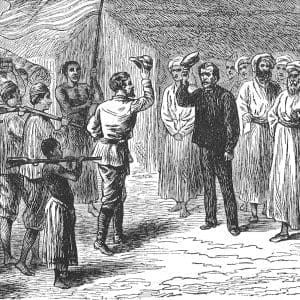In my first post about alternative KM tools, I wrote about audio files, and my new productivity enhancer – the digital voice recorder. One thing I noticed when replaying these sessions and capturing the notes; since I could cue and review all parts of the conversations, I was taking more notes than I used to (when working from handwritten notes and memory). The added accuracy and completeness of my notes was a mixed blessing; it was taking longer and longer to keep caught up.
Someone mentioned voice recognition software, and an old acquaintance: Dragon Naturally Speaking. I had first been exposed to this software over 10 years ago and was curious as to how things have progressed. My goal, of course, was to play back the tapes from my meetings and have Dragon convert it all to text. That didn’t exactly work out as planned …
Typing as Fast as I Can Talk
I don’t think I really expected it to work; I commented last time about how fast we all talk. When the team is having a great discussion, covering many topics in a tight time frame, I find I often have to queue and review sections over and over again. Transcribing meetings as dictated speech was one of my first experiments, and one of my quickest, ummm … learnings.
Actually, the learning started in the installation process; after loading up the software, I had to spend some time training Dragon how to listen to and understand my voice, and translate accurately. I knew immediately that it would be impractical to try to transcribe meeting content (multiple voices!). However, I did work through some simple “voice typing” tasks, and found that once I got the right microphone, and got used to talking like a newscaster (slowly and distinctly), this was definitely a useful tool. I now dictate many meeting notes, e-mails, and project documents instead of typing – in fact, I am dictating this entire series of posts on KM tools using this new (to me) technology.
Voice recognition software is at once liberating and challenging. I’ve been writing “stuff” for a long time, and I know that I’m composing something readable as I work; I do not capture thoughts in a stream of consciousness. When I compose this “traditional” way, I don’t have to edit and rework as much, but it takes a bit longer to create a reasonable finished product.
Now, when I dictate my thoughts into the word processor, the results are structured a bit differently, because Dragon is capturing how I talk, not how I write. There is a subtle difference (sometimes not-so-subtle), which becomes apparent when I go back to edit. Truth be told, the dictating and editing approach takes longer than my original method, because I have to clean up a lot more stuff. For example, it took me about 15 minutes to dictate first version of this post; I then spent an hour cleaning it up into something presentable for the blog.
Still, when I get going on a subject, and when I have reasonably well thought-out ideas, it’s definitely quicker to capture things using voice recognition than it is to try and type it up. It would be interesting to test my words-per-minute when dictating as opposed to typing.
<aside> I realize that my typing accuracy is unfairly increased when using a modern word processor – you gotta love the automatic spellchecker. I don’t see the AutoCorrect function cleaning up my mess when dictating with the Dragon. Still, I keep going through the various voice training exercises; over time, the Dragon (like my Blackberry)is getting much more accurate. </aside>
Some other things I have noticed:
- Apparently, this thing has read my document folders, picking out the correct spelling of names words and concepts for people, systems, or organizations . I am often surprised by things that Dragon guesses accurately; at other times, I’m disappointed by some fairly striking misses (must work on my enunciation … the rain in Spain …).
- As mentioned previously, taping my voice and listening to it has changed some of my speech patterns. Dragon dictation has done this even more, as I need to clearly enunciate when entering text into the machine. (Caveat Dictator (sic): In the middle of one note taking session, I started talking to my wife like this and she thought I was nuts.)
- I was disappointed with the amount of software that Dragon attempted to install automatically – without giving me a choice. Three different applications installed in my Run Once folders without asking. All are apparently trying to do me a favor by checking for software updates – a nice idea, but I prefer to check for that stuff myself. I realize that the typical target user for an application like this might appreciate these automatic checks, but they really should give me a choice when installing.
All things considered, I will admit to a certain amount of amazement, at how productive voice-recognition software is making me. Still, I don’t think that Dragon will make anybody an excellent writer simply by recording their words; like the worst type of spreadsheets, this could just be helping me create more “content” noise, faster.
See the whole Alternative KM Tools series:
- (1 of 3) Audio Files for Audiophiles
- (2 of 3) Typing as Fast as I Can Talk
- (3 of 3) Follow Him Around






This Post Has 0 Comments